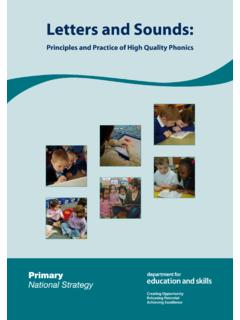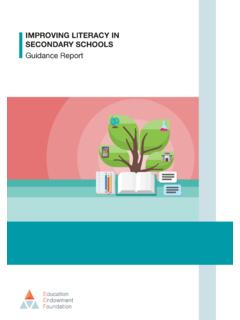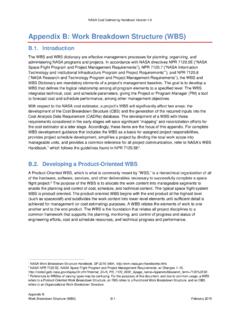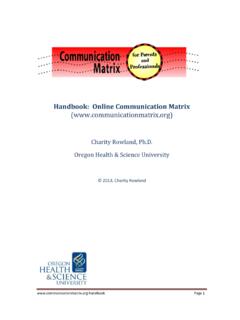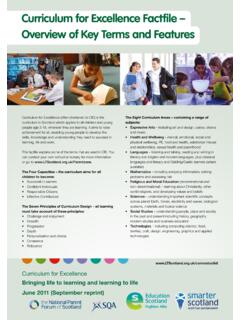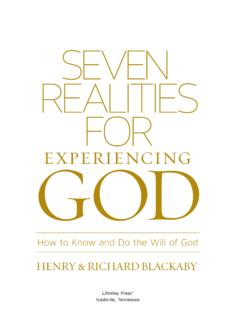Transcription of THE RELIGIOUS ASPECTS OF NURSING CARE
1 THE RELIGIOUS ASPECTS OF NURSING CAREby J. KIRSTINE GRIFFITH USE BYINPATIENT HEALTH CARE FACILITIESTHE RELIGIOUS ASPECTS OF NURSING CAREby J. KIRSTINE GRIFFITH Printing, 1996 Fourth Printing, 2004 Digital Edition, 2009 Vancouver, following material was collected from many sources. The RELIGIOUS representatives who verified the information were most cooperative and pleased about the project. Many friends and colleagues assisted with guidance, suggestions and editing. The staff of several NURSING units also made suggestions with positive comments. To all these people the author gives unconditional appreciation and thanks, and takes personal credit for any inaccuracies that might have occurred. 2 PREFACEThis resource identifies some of the traditional practices of thirty- seven of the religions listed by Canadians in the 1991 census.
2 It is designed to help NURSING staff of health care facilities to care for patients with unfamiliar RELIGIOUS practices. Details of each religion are not included but traditional practices that can affect NURSING care are. There are great variations within any religion or denomination; every member or adherent of that faith does not follow all traditional practices. The guide provides a basis for planning care with the information needed to question individual patients about preferences for practices important to member or authority verified the information for each of the religions included. For each faith there is a short history, a list of common RELIGIOUS practices that may affect care, and an addendum of facility chaplain can contact a RELIGIOUS representative for the patient or family. Additional information is usually available through the facility chaplain or the Public Library.
3 A suggested reading list is main criteria for culturally sensitive NURSING care include:SHOWING RESPECT FOR RELIGIOUS DIFFERENCES,SHOWING RESPECT FOR THE INDIVIDUALITY OF THE PATIENT,KEEPING AN OPEN MIND,MAKING NO ASSUMPTIONS, ASKING QUESTIONS, AND LISTENING ACTIVELY TO VERBAL AND NON-VERBAL RESPONSES OF THE PATIENT. 3 TABLE OF CONTENTS(Based on denominations used by Statistics Canada) CHURCH OF ' AND MISSIONARY OF OF GOD OF JESUS CHRIST OF LATTER-DAY SAINTS (MORMONS)..21 CONFUCIANISM ..22 COPTIC ORTHODOX ORTHODOX SQUARE GOSPEL .. 'S - see CHURCH OF JESUS CHRIST OF LATTER-DAY CATHOLIC DAY .. CHURCH OF READING .. the INTRODUCTION In 1988, Canada passed the Multicultural Act which in part states "that our multicultural diversity is a fundamental characteristic of our society, an essential part of what it means to be Canadian.
4 "In the 1991 census, Canadians listed more than 100 countries of family origin, 126 mother tongues, and membership or adherence to more than 100 RELIGIOUS denominations. Approximately twenty- seven million people stated affiliation with the Christian faith and 300,000 affiliation with the Jewish faith. Another 747,000 residents listed affiliation with religions other than Christian or Jewish. million stated no RELIGIOUS spiritual leaders were the primary healers of the sick. They are still the primary contact for health care for many individuals today. Then, too, RELIGIOUS beliefs are often intertwined with health practices, influencing the acceptance of illness, treatment and NURSING care. "Sensitive care means giving respect and incorporates the basic values of human freedom and RELIGIOUS diversity." (Johnston, 1990). If competent sensitive NURSING care is to be given to those admitted to the health care system, it is essential that the nurse is able to relate to patients of different faiths and cultures.
5 Even when the patient's background is similar to that of the nurses, it does not follow that the patient shares the same beliefs as the nurse. One should always be careful to avoid stereotyping, as this demeans the patient as well as the nurse. Treating the patient as an individual is important because of differences such as religion, culture, gender, education, socioeconomic status, and family traditions. "The caregiver may not agree with the beliefs of a patient in order to take them seriously. Support however needs to be non-sectarian, non-dogmatic and appropriate to the patient's view of the world." (Johnston, 1990).II LANGUAGE DIFFICULTIES The main objective of communication between a nurse and the patient is that a message be transmitted accurately. This can be difficult when the patient has limited English, or when the nurse uses medical terminology.
6 The distortion and/or misinformation which result can cause unnecessary worry, misunderstanding or inadequate information to be health agencies have access to trained medical interpreters for the major languages. Others are setting up a process for obtaining these services. Family members are often helpful with general information, but may not be reliable as interpreters when they think the patient should not be told or when the information is embarrassing to either interpreter or patient. Galanti (1991, page 16) states ".. speaking the same language is not always sufficient. Cultural rules often dictate who can discuss what with who." Sometimes a same sex interpreter and nurse are required for accuracy. Problems with confidentiality or privacy of the patient can occur with unskilled interpreters.
7 III DIFFERING VIEWPOINTSMost nurses in Canada have been educated in the Western medical model with its emphasis on the biophysical causes of disease and related scientific treatment. This model usually reinforces the nurse's previously acquired RELIGIOUS values and beliefs. Attitudes are often subconscious but can influence the way the nurse views the world and relates to in health care includes an awareness of one's own RELIGIOUS identity and an acknowledgment of the integrity and value of other religions, no matter how confusing they may appear. By examining their own history and beliefs, the nurse can usually visualize the individual patient more clearly as an individual with needs to be met, rather than as a RELIGIOUS stereotype. Galanti (1991, page 2) explains the difference between a stereotype and a generalization by an example -- "Rosa is from Mexico, therefore she has a large family.
8 " (stereotype). "Most Mexicans have large families, I wonder if Rosa has." (generalization).Nurses need to appreciate and respect the patient as an individual. In so far as it is possible within the limits of the facility and the medical regime for the patient, the nurse should support and assist that individual in maintaining traditional RELIGIOUS practices important to that NURSING health history, which provides a systematic guide for obtaining information, is usually obtained from each patient. This is used as far as possible to plan and modify care to fit the patient's usual living patterns and preferences regarding RELIGIOUS practices. Some agencies include a cultural profile with the NURSING health history. Stereotyped assumptions about a person's lifestyle and preferences are not reliable because of great variations between people.
9 In asking questions about an individual's preferences, it is often helpful to give a reason for wanting the information. The nurse might ask about food preferences that the dietitian might need, such as a vegan diet; about modesty needs to prepare a patient for a 6medical examination, such as the necessity for same sex caregivers; or the reason for a refusal of some aspect of care, such as an interference with daily prayers. IV TRADITIONAL RELIGIOUS PRACTICESEach religion has its own unique history, some recent and some originating in antiquity. Each religion also has its own practices for daily living based on traditions, beliefs, values and rules. Not all of these RELIGIOUS practices are applicable to inpatient NURSING care, although they may be important in normal life.
10 Some examples of some non-applicable practices could include adult baptism by immersion; the Muezzin calling the faithful to prayer; or special practices in the place of worship. "Sometimes the appropriate RELIGIOUS leader can assist with health care by relieving the patient of RELIGIOUS duties (such as fasting) during a period of illness. Patients must be given the choice about some treatments through informed consent without pressure from caregivers to conform. This is often an ethical decision frequently involved in the patient's RELIGIOUS beliefs. A RELIGIOUS leader might help considerably" (Johnston, 1990).In most situations, the facility chaplain can be helpful in contacting the appropriate RELIGIOUS representative. This person is often able to offer comfort and support to the ill patient or to resolve problems pertaining to conflicts between RELIGIOUS practices and NURSING are a wide range of practices between members of the same faith, the same family, different generations and different following are the most common practices affecting the NURSING care of the inpatient of a health care facility:HOLY DAYSSome religions set aside one day each week as a Holy Day; others do not.
